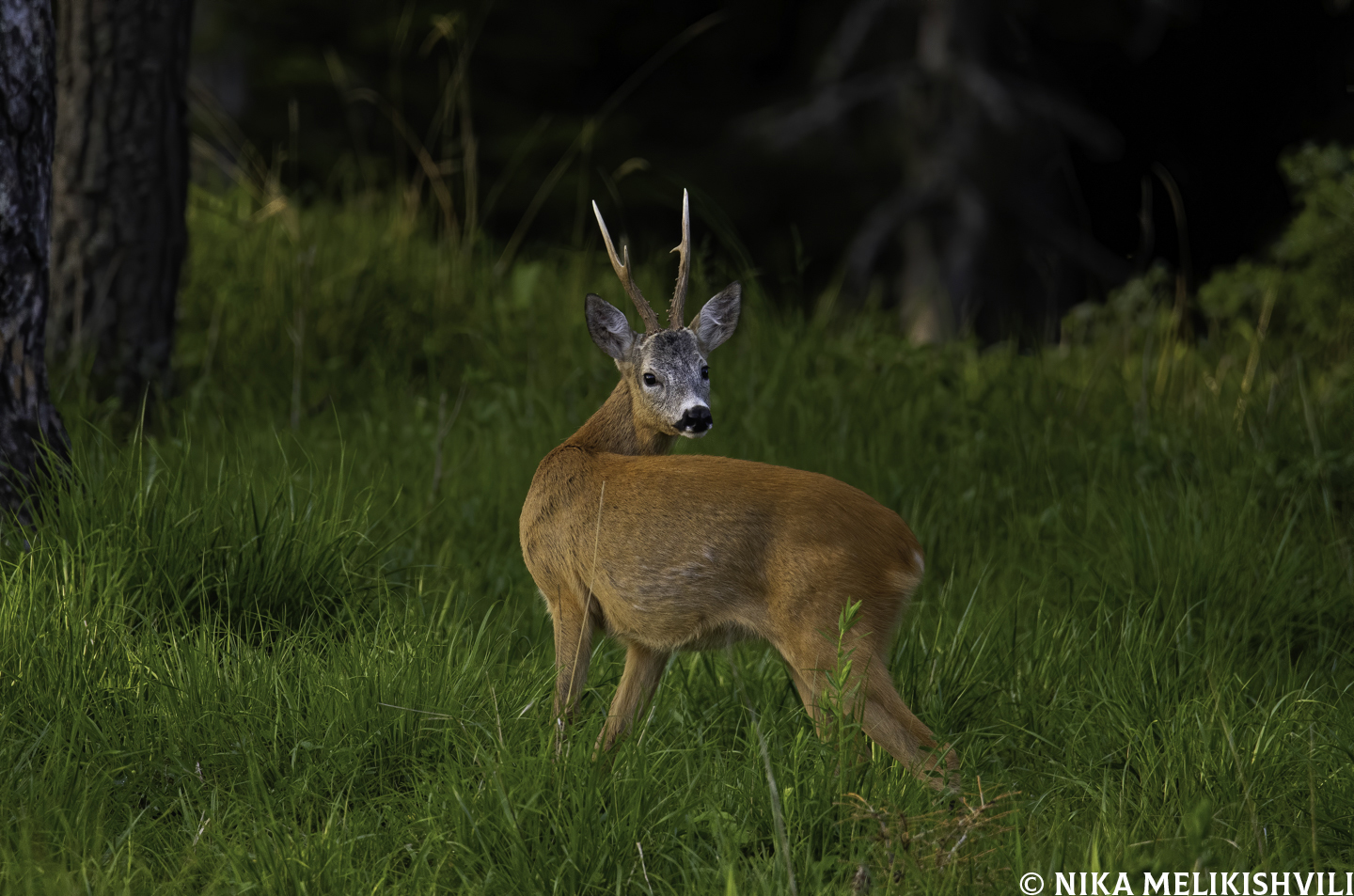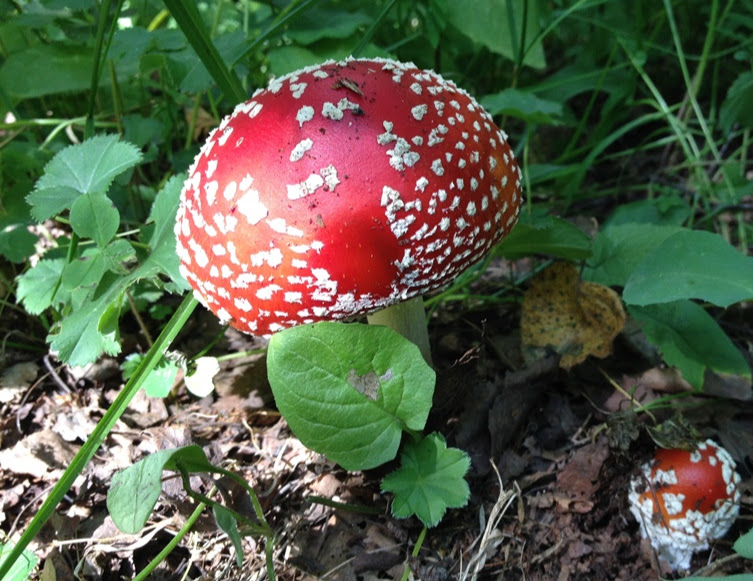Browse by taxonomy
Simple search by name
Capreolus capreolus
Taxon: Capreolus capreolusAuthor: Nika Melikishvili
Comment: Borjomi-Kharagauli National park
Uploaded by: Armen_Seropian

Download full size image 1440 X 953
Name According To: https://www.iucnredlist.org/species/42395/22161386
Species: capreolus
Taxon Rank: Species
Scientific Name Authorship: (Linnaeus, 1758)
Vernacular Name: Capreole
Georgian Name: შველი
GBD Remarks:
Conservation Status (International): Conservation Status (International): IUCN status - Least Concern. Widespread and common species with no major threats for the global population. Listed in Bern Convention (Appendix III).
Conservation Status (national): Georgian Red List: not included, not evaluated.
Economic importance (national): game species, favorite for trophy hunters.
Methodological approaches: Monitoring should combine tracking on transects, direct visual counts from high watching points, counting at night using thermal imaging cameras as well as indirect methods (e.g. dung counting, call counts) (Krebs, 2006; Sutherland, 2006; Thompson et al., 1998). Observations on wild boar - visual observations and tracking (footprints, feces etc.) should be carried out by professional zoologists or trained experts together with with rangers and/or students. Counting all traces of the species within a protected area or sanctuary during multiple years will indicate the existing trend. For modelling population numbers, count data (from line or point transects), should be elaborated with software DISTANCE (Bukland et al. 2001, Thomas, L., et al. 2010) (http://www.ruwpa.st-and.ac.uk/distanc/).
Research activities: Contacts: Ilia State University, Institute of Ecology, Natia Kopaliani, Zura Gurielidze, Alexander Gavashelishvili. No ongoing research projetcs. Transect counts were hold in 2012, irregular counts are carried in the hunting farms, according to requests of Biodiversity Conservation Department of the Ministry of Environment Protection.
Specific relevant information: According to the Annual Report of the Agency of Protected Areas for 2007 - 2012 Years, national population size is ca. 2100 individuals within the protected areas of Georgia. 2012 extrapolative estimate (გურიელიძე, 2013) suggests size of national population between 7000-8000 individuals. Spatial distribution of the deer depends on the presence of food (green plants), shelters (scrub, ravens) and absence of domestic ungulates.
Relevant website: http://www.iucnredlist.org/details/42395/0
Why to monitor: Why to monitor: In protected areas, counts of roe deer are hold regularly. The species is an indicator of habitat suitability for a number of other species, including red deer, hare, fox, pheasant, and a good indicator of poaching intensity in an area.
Preliminary suggestion: rely on the annual reports of the protected areas staff and expand monitoring on the private hunting farms and sanctuaries.
კონსერვაციული სტატუსი (საერთაშორისო): IUCN სტატუსი - LC. ფართოდ გავრცელებული მრავალრიცხოვანი გლობალური პოპულაცია. შეტანილია ბონის კონვენციის მე-3 დანართში.
კონსერვაციული სტატუსი (ეროვნული): არაა შეფასებული.
ეკონომიკური მნიშვნელობა (ეროვნული): სატროფეო და სხვა სახის ნადირობის მნიშვნელოვანი ობიექტი.
მონიტორინგის მეთოდები: მონიტორინგი უნდა ეყრდნობოდეს ტრანსექტებზე აღრიცხვის, პირდაპირი თვლის ამაღლებული წერტილებიდან, ღამის თვლებს თერმალური კამერების მეშვეობით და არაპირდაპირი მეთოდების (კვალის ან ნაკელის თვლის, მყვირალობისას აღრიცხვის) კომბინაციას (Krebs, 2006; Sutherland, 2006; Thompson et al., 1998). დაკვირვებები და კვალზე დადევნება უნდა განახორციელონ პროფესიონალ ზოოლოგებმა და რეინჯერებმა/სტუდენტებმა. მრავალწლიანი დაკვირვების საფუძველზე გამოსავლენია პოპულაციის ტრენდი. პოპულაციის რიცხოვნობის მოდელირებისთვის გამოსადეგია პროგრამა DISTANCE (Bukland et al. 2001, Thomas, L., et al. 2010) (http://www.ruwpa.st-and.ac.uk/distanc/).
მიმდინარე კვლევები: კონტაქტები - ილიას სახ. უნივერსიტეტი, ეკოლოგიის ინსტიტუტი, ნათია კოპალიანი, ზურა გურიელიძე, ალექსანდრე გავაშელიშვილი. ამჟამად აღრიცხვები არ მიმდინარეობს. 2012 წელს ჩატარდა ტრანსექტებზე აღრიცხვები (გურიელიძე 2013), ტარდება არარეგულარული აღრიცხვები სანადირო მეურნეობებში გარემოს დაცვის სამინისტროს მოთხოვნით.
სპეციფიკური ინფორმაცია: დაცული ტერიტორიების სააგენტოს 2007-2012 ანგარიშის მიხედვით, დაცულ ტერიტორიებზე ბინადრობს დაახლ. 2100 შველი. 2012 ექსტრაპოლაციური შეფასებით (გურიელიძე, 2013) ეროვნული პოპულაციის რიცხოვნობა 7000-8000 ინდივიდს ითვლის. სივრცობრივი განაწილება განპირობებულია მწვანე მცენარეების (საკვების) საკმარისობით, ტავშესაფარის (ბუჩქების, ხრამების) არსებობით და შინაური ჩლიქოსნების კონკურენციისგან დაცულობით.
რელევანტური ვებსაიტი: http://www.iucnredlist.org/details/41775/0
რატომაა საჭირო მონიტორინგი: დაცული ტერიტორიების მოვალეობაშია რეგულარული აღრიცხვების შედეგები წარუდგინონ სამინისტროს. სახეობა სხვა სანადირო ცხოველების (ირმის, კურდღლის, მელას) ჰაბიტატის მდგომარეობის ინდიკატორია, ასევე ბრაკონიერობის პრესის სიძლიერის კარგი მაჩვენებელია.
რეკომენდაცია: ერთ-ორ წელიწადში ერთხელ გარემოს დაცვის სამინისტრომ მოსთხოვოს დაცული ტერიტორიების ადმინისტრაცებს და სანადირო მეურნეობის მფლობელებს ტახის აღრიცვის შედეგები.
Page Authors: Kandaurov A. ,
Reference of occurrence in Georgia: Bukhnikashvili, A. & Kandaurov, A., 2002. The annotated list of mammals of Georgia. Proceedings of the Institute of Zoology, Tbilisi, XXI: 319-336
Conservation Status
This section is under construction
National Red List Status of have not been evaluated

